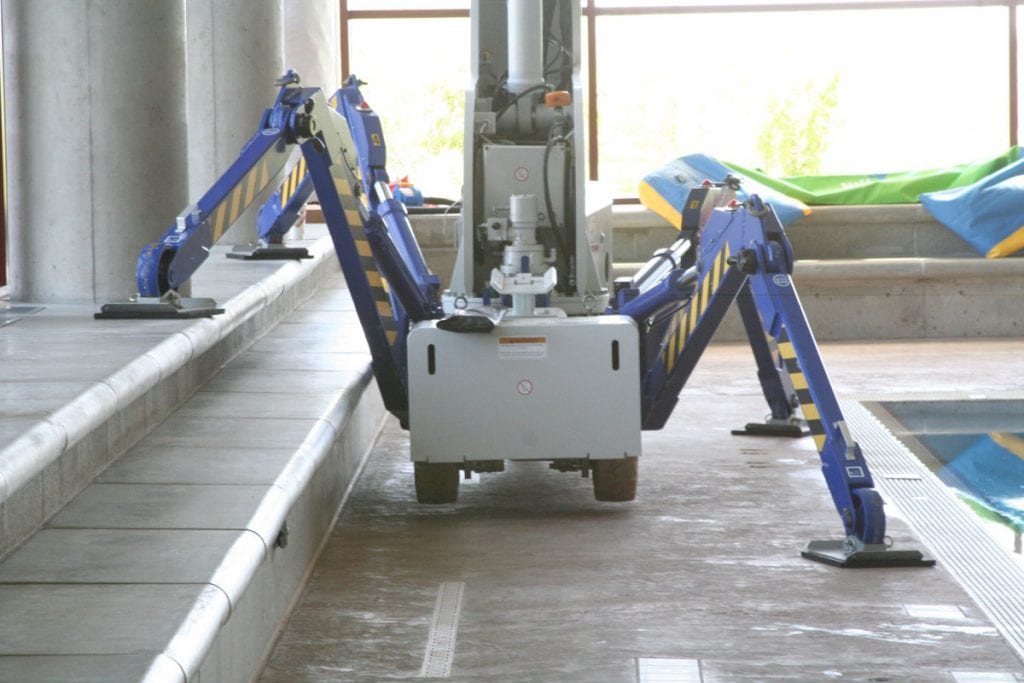An indoor lift rental is a service that provides temporary access to elevated areas inside a building. It is commonly used in construction, renovation, and maintenance projects where workers need to reach high places to carry out their tasks safely and efficiently. Indoor lift rentals are also popular for events such as concerts, trade shows, and exhibitions.
Indoor lifts come in various shapes and sizes, and they can be classified into two main categories:
- Indoor Scissor lifts
- Indoor Boom lifts
Scissor lifts are vertical platforms that are raised and lowered by crossing braces, while boom lifts have a hydraulic arm that extends outward and upward to reach higher areas.

Indoor Lift Rental
Indoor lift rentals typically include delivery, setup, and training on how to operate the lift safely. The rental period can vary from a few hours to several weeks, depending on the needs of the project. Some rental companies also offer maintenance and repair services to ensure that the lift is in good working condition throughout the rental period.
When renting an indoor lift, it is important to consider the weight capacity, working height, and outreach of the lift. The weight capacity refers to the maximum weight that the lift can carry, while the working height is the maximum height that the lift can reach. The outreach refers to the distance that the lift can reach horizontally from its base.
Before using an indoor lift, it is important to follow safety guidelines to prevent accidents and injuries. This includes wearing personal protective equipment such as hard hats and safety harnesses, following the manufacturer’s instructions for operating the lift, and using the lift on level surfaces.
In conclusion, an indoor lift rental is a convenient and cost-effective solution for accessing elevated areas inside buildings. By choosing the right type of lift and following safety guidelines, workers can carry out their tasks efficiently and safely. If you need to access high places in your building, consider renting an indoor lift from a reputable rental company.
Indoor Lift Rental Benefits
Renting an indoor lift can provide many benefits, making it a popular choice for individuals and businesses. Here are some of the reasons why renting an indoor lift may be a good idea:
- Cost-effective: Renting an indoor lift is typically more cost-effective than purchasing one, especially if the lift will only be used for a short period of time. Renting also eliminates the need for maintenance and repair costs, which can add up over time.
- Convenience: Indoor lift rentals come with delivery, setup, and training on how to operate the lift safely. This saves time and effort compared to purchasing a lift, which would require installation and training.
- Access to specialized equipment: Renting an indoor lift provides access to specialized equipment that may not be available for purchase or is too expensive to purchase outright. This allows businesses to complete technical tasks without investing in costly equipment.
- Increased safety: Indoor lift rentals have safety features such as safety harnesses, emergency stop buttons, and guardrails. This can improve safety for workers who need to access elevated areas.
- Flexibility: Indoor lift rentals can be rented for different periods of time, depending on the needs of the project. This provides flexibility and allows businesses to rent equipment only when needed.
In summary, renting an indoor lift provides a cost-effective, convenient, and safe way to access elevated areas inside buildings. It also provides access to specialized equipment and allows for flexibility in rental periods.
Safety Precautions for an Indoor Lift Rental
Indoor lifts are designed to be safe when used correctly. However, like any heavy machinery, there are risks associated with their use. It is essential to follow proper safety procedures to minimize these risks and ensure the safe use of indoor lifts. Here are some safety measures that should be taken when using indoor lifts:
- Proper training: All operators of indoor lifts should receive proper training on how to operate the lift safely. This includes how to start, stop, and maneuver the lift, as well as how to use safety features such as emergency stop buttons and guardrails.
- Personal protective equipment (PPE): All workers using an indoor lift should wear the appropriate PPE, such as hard hats, safety harnesses, and non-slip shoes.
- Weight capacity: Indoor lifts have a weight capacity that should never be exceeded. Operators should be aware of the weight of the equipment and materials they are carrying and ensure that it does not exceed the lift’s capacity.
- Proper placement: Indoor lifts should be placed on a level surface and away from hazards such as power lines, machinery, or uneven surfaces.
- Guardrails and safety features: Indoor lifts should have guardrails to prevent falls, and all safety features, such as emergency stop buttons and alarms, should be in working order.
- Regular maintenance: Indoor lifts should be inspected and maintained regularly to ensure that they are in good working condition. Any issues should be addressed immediately.
By following these safety measures, indoor lifts can be used safely to access elevated areas inside buildings. It is important to remember that safety is a shared responsibility, and everyone who uses an indoor lift should be aware of the risks and how to minimize them.
Contact Innovative Reach for your Indoor Lift Rental Services
Got questions? Don’t hesitate to call (319) 900-5995 and we’ll be glad to assist you!

